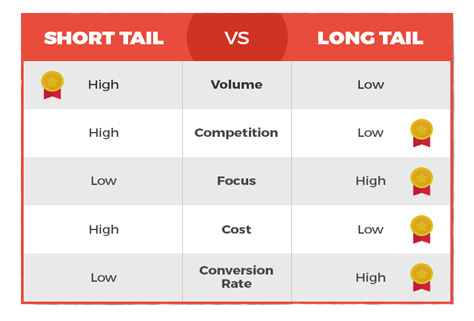Can Organic Search and Paid Search Co-exist?
Every business owner has different goals for their website. These goals could include increasing the number of web pages viewed by visitors, decreasing bounce rates, or increasing traffic from new visitors in general. Whatever your goals for your company website, the overarching goal is for your business to first be found online. How does that happen? Someone – a prospective or existing customer – has a need for a product or service and performs an online search. Where that search ends up could make or break your ability to meet your goals, depending on how well your online marketing strategy performs.
Online marketing involves the use of search engine optimization (SEO) and search engine marketing (SEM) to draw traffic. While Yahoo and Bing still get some amount of search traffic, Google is the search engine used in the vast majority of online searches. Google’s two main vehicles for returning search results are paid search and organic search. But, is one better than the other? Does organic search provide better results than paid search (or vice versa)? Online marketers everywhere have been trying to find the answer to that question for some time. Let’s next review what each type of search is as well as the main differences between the two.
SEO Philadelphia
A user who performs a query based on entering specific keywords and key phrases is performing a natural, or organic, search. Proper implementation of search engine optimization is the strategy used in this type of search, as SEO must align with the words and phrases a user enters to perform their search. A business appears in organic search results based solely on the content on their website/webpage and its usefulness and value to the user. Google looks for content that users will find relevant and valuable.
According to Search Engine Watch*, more than 90% of web traffic occurs as a result of a business’s website appearing on the first page of Google search results. Using relevant key words and having quality SEO content is the best way for that content to eventually get indexed in search engines and thus ranked higher in Google’s search results. (Yes, it takes time and effort for your web pages to be indexed so that they generate traffic.) Other benefits of proper SEO include increased leads and improved close rates.
Online searching and shopping has been on a swift and steady rise in recent years – and the trend shows no signs of slowing down or decreasing. Additionally, Google is, by far, most people’s preferred internet search engine. Savvy web developers and internet marketers understand this and continue to rely on proper implementation and ongoing management of SEO to keep websites as highly ranked on search engine results pages (SERPs) as possible.
SEM Philadelphia
Search engine marketing, on the other hand, involves the use of certain keywords in paid/sponsored online ads that appear when a user performs a search using those keywords. In contrast to SEO’s organic search quality, SEM is a paid search function in which a business actually pays for visits to their website rather than earn them through an organic search. With SEM, a business bids an amount of money on specific keywords to ensure their ad appears if it matches a user’s search query. Sponsored search results are identified as ads and appear at either the top of the search engine results page (above the list of organic search results) or along the right side of the page.
Business owners and digital marketers have found that paid search strategies such as pay-per-click pay off for them – big time. Because of the prevalence of paid ads, users have come to view these listings as normal search results, in spite of them being labeled as ads. And, a business no longer needs to wait months to be indexed and appear on a SERP, as they can pay for the opportunity for their ad to appear in search results immediately and be seen by targeted users. A well run paid search strategy can yield a hefty return on the paid ad investment.
SEO, SEM, or Both?
Together, SEO and SEM as digital marketing strategies produce results; they can increase and improve your online presence and ensure targeted users receive information that is the most relevant and valuable to them. Improved conversions, increased web traffic, more qualified leads, and ultimately, business growth and profits are all realistic with SEO and SEM campaigns that are designed to work for you. When you understand the timelines for both strategies – SEO can take months to yield results and SEM can provide virtually immediate results – you are well prepared to implement the strategy (or strategies) that best meets your digital marketing needs and overall business objectives.
If you want to learn more about how to combine SEO and SEM to boost your website’s ranking on Google, contact Perfexion, Inc., Philadelphia’s web design and development company. The professionals at PERFEXION are digital marketing experts. They collaborate with business owners to design and deliver SEO and SEM strategies that are sure to improve your bottom line.
WEBSITE pfxn.com
E-MAIL hello@pfxn.com
CALL 610-783-7660
SAY HELLO
* https://searchenginewatch.com/sew/study/2276184/no-1-position-in-google-gets-33-of-search-traffic-study












